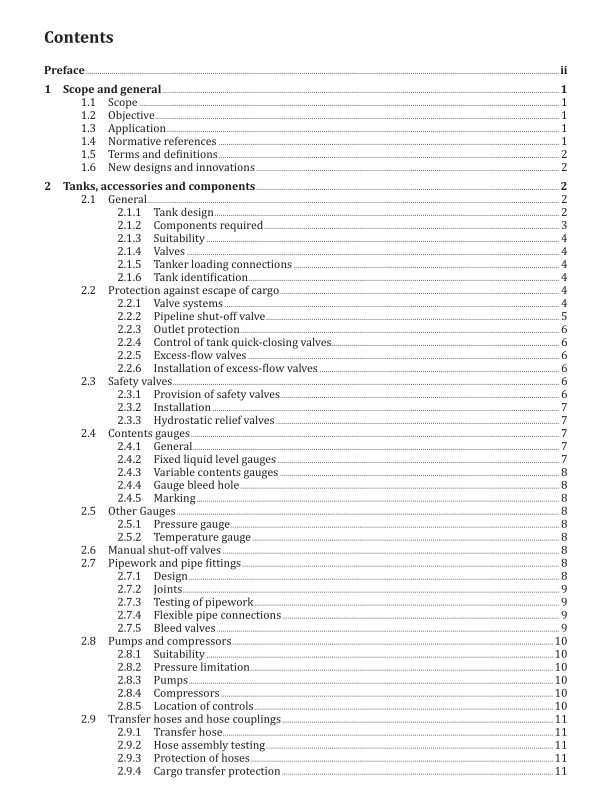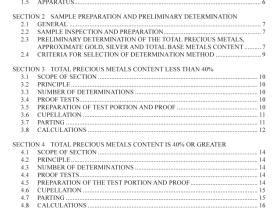AS 2809.3 pdf download – Road tank vehicles for dangerous goods Part 3: Road tank vehicles for compressed liquefied gases

AS 2809.3 pdf download – Road tank vehicles for dangerous goods Part 3: Road tank vehicles for compressed liquefied gases
1 Scope and general1.1Scope
This Standard specifies requirements for the design, construction, and inspection and testing of roadtank vehicles for the transport of compressed liquefied gases by road.T’his Standard is complementaryto AS 2809.1.
1.2Objective
The objective of this Standard is to provide designers, planners, operators and regulators with technicalrequirements for road tank vehicles transporting compressed liquefied gases.
1.3Application
ln addition to this Standard, road tank vehicles for the transport of compressed liquefied gas shall alsoconform to AS 2809.1.Where any requirement of this Standard differs from a similar requirement inAS 2809.1, this Standard shall take precedence.
1.4 Normative references
The following documents are referred to in the text in such a way that some or all of their contentconstitutes requirements of this document.
AS 1210, Pressure vessels
AS 1271,Safety valves,other valves,liquid level gauges and other fittings for boilers and unfiredpressure vessels
AS 1349,Bourdon tube pressure and vacuum gauges
AS 2809.1, Road tank vehicles for dangerous goods, Part 1: General requirements for all road tank vehiclesAS 4041, Pressure piping
AS D26,Tube fittings with Dryseal American standard taper pipe and unified threads for automotive andindustrial use
AS/NZS 1596, The storage and handling of LP Gas
AS/NZS 1869,Hose and hose assemblies for liquefied petroleum gases (LP Gas), natural gas and town gasAS/NZS 60079.29.2,Explosive atmospheres,Part 29.2: Gas detectors—Selection,installation,use andmaintenance of detectors for flammable gases and oxygen
ISO 5771,Rubber hoses and hose assemblies for transferring anhydrous ammonia—SpecificationISO 10497,Testing of valves —Fire type-testing requirements
ANSI/CGA G-2.1-2014,Requirements For ‘The Storage And Handling 0f Anhydrous Ammonia (An AmericanNational Standard)
APl 607, Fire test for quarter-turn valves and valves equipped with non-metallic seats
EN 13175, LPG Equipment and accessories —Specification and testing for Liquid Petroleum Gas (LPG)pressure vessel valves and fittings
UL 125,Standard for Flow Control Valves for Anhydrous Ammonia and LP-GasUL132,Standard for Safety Relief valves for Anhydrous Ammonia and LP-Gas1.5Terms and definitions
For the purpose of this Standard, the definitions given in AS 2809.1 apply.1.6 New designs and innovations
This Standard does not prevent the use of designs,equipment,materials,methods of assembly,procedures and the like that do not conform with the specific requirements of this Standard, or are notmentioned in it, provided the performance requirements specified herein are met.
Where a specific section does not state a performance requirement, use of components which byassessment and design achieve the same level of safety may be used.
Tanks, accessories and components
2.1General
2.1.1 Tank design
The tank, its supports and connections, shall conform to AS 1210 and with any applicable Standard forthe particular cargo, with the following qualifications:
(a
The design pressure shall be not less than the equilibrium vapour pressure for the cargo at atemperature of 46 °C, or not less than 700 kPa.An LP Gas tank shall be designed for propaneunless it is dedicated to butane service exclusively.
NOTE 1 For those cargoes whose vapour pressure can be below atmospheric pressure at wintertemperatures, care should be taken to account for the possibility of a negative pressure in the tank.NOTE 2 AS 1210 references AS 2872 which sets out a method for calculating the temperatures andcorresponding pressures of fluids in vessels subject to atmospheric and solar heating in the hottestmonth of the year in various locations in Australia.
(b)
The cargo load and static head for calculation of the dynamic loading shall be calculated onthe basis of the mass fill ratio specified in Table 2.1.
(c)
Except where otherwise approved, the materials of construction shall be steel alloy that issuitable for and compatible with the cargo.
(d)
Screwed connections to the tank shall not exceed 50 mm nominal bore, except for fullyinternal safety valves.
(e)
Safety valves shall be protected so that, in the event of overturn onto a hard surface, theiropening will not be prevented and their discharge not restricted.
(1
Each tank shall have a reflective bright metal or gloss white painted surface, except thatanother colour or finish may be used provided that the design service temperature has beenadjusted in accordance with the maximum service temperature requirements of AS 1210.









